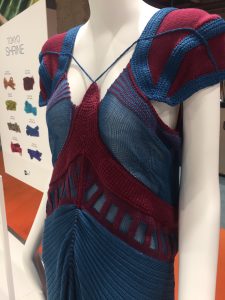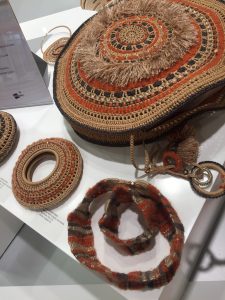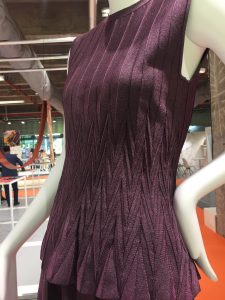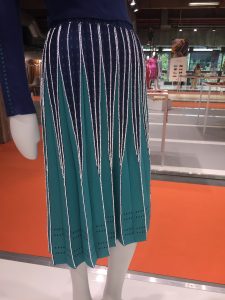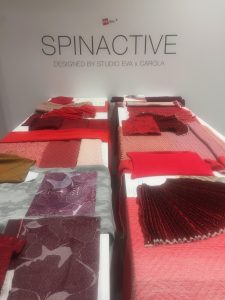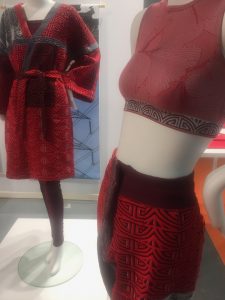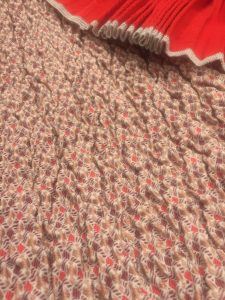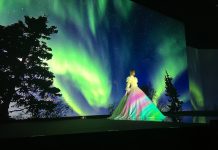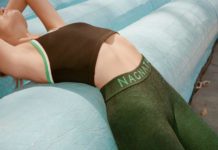Last month, we travelled to Paris for SPINEXPO’s 3rd Autumn/Winter showcase, once again at the city’s striking creative hub on the Seine river, the Cite de la Mode et du Design.
SPINEXPO founder Karine Van Tassel, curated 65 mill and manufacturer exhibitors, two thirds of which were yarn spinners, mainly from the Far East. For Autumn/Winter 2019/20, throughout both the yarn collections and Karine’s astute trend directions, there was a powerful underlying concept of transience, of a lifestyle that does not stop moving – physically, mentally, geographically.
Of the 5 trend directions for Autumn/Winter 2019/20, we began at the start, where the show is held, with Parisian Romantic. Airy and fuzzy yarns in twilight-sky tones contrast with classical and luxurious wood browns in polished, sheen qualities. Pretty knit ruffles and regular fine stripes sit alongside weave-like knits inspired by Chanel tweed. Geometric stitch patterns are distorted by volumous and tonal yarns, much like the striking reflection on water of the famous Louvre Pyramid.
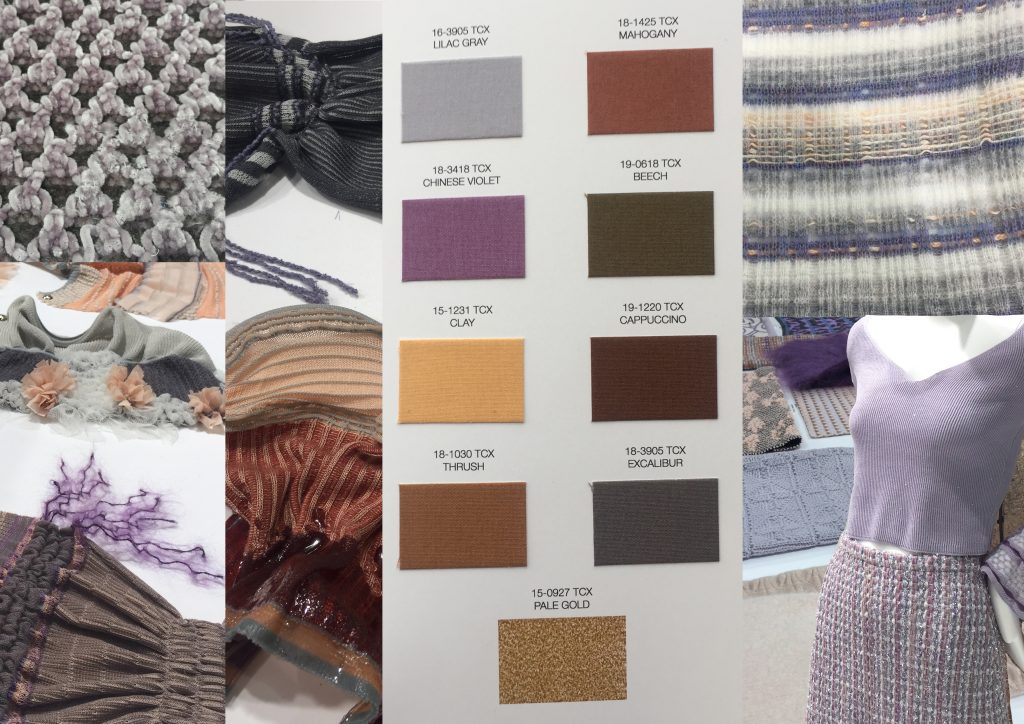
Tokyo Shrine blends notions of the Japanese metropolis, taking the perfect symmetry and geometrics of ancient shrines and temples and juxtoposing this with the bright lights and buzz of Tokyo. Faded cypress and cedar wood browns along with energising leafy and moss greens are lifted by vibrant synthetic blues and turquoises, warmed by deep plum tones. Wavering, super lightweight geometric knits in dry cotton blends are layered with superfine boucle and lofty geometric knits that are engineered to shape the body. Intelligent technical yarns such as highly reflective filament fibres are plated with luxurious lustre yarns.
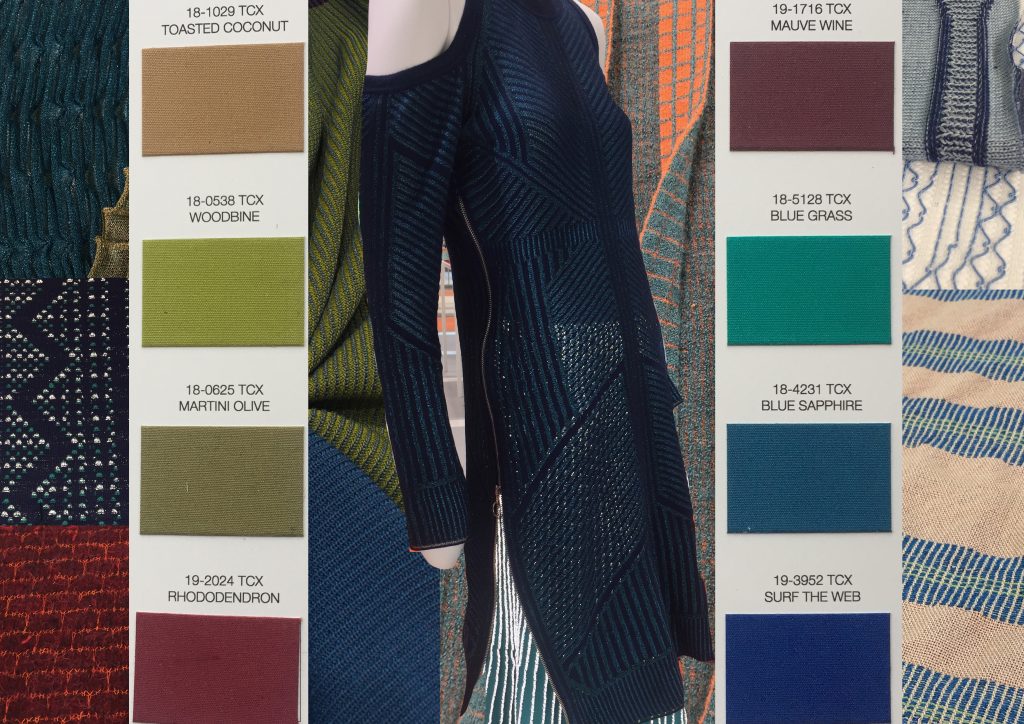
The autumn/winter season is truly turned on its head, when we travel to the Kalahari Desert. A hot, spicy palette of chilli reds, deeply golden oranges and browns are off-set by parched canvas and a humid storm sky grey. For metallics, true copper is the accent. Basketry inspired knits are shown in soft sheen open-work stitches and crochet, contrasted by dry linen, cotton and hemp fibres, knitted in compact geometric fabrics. Energetic and un-even edging inspires detail, with cut fringing, and weave-like in-lay loop edges.
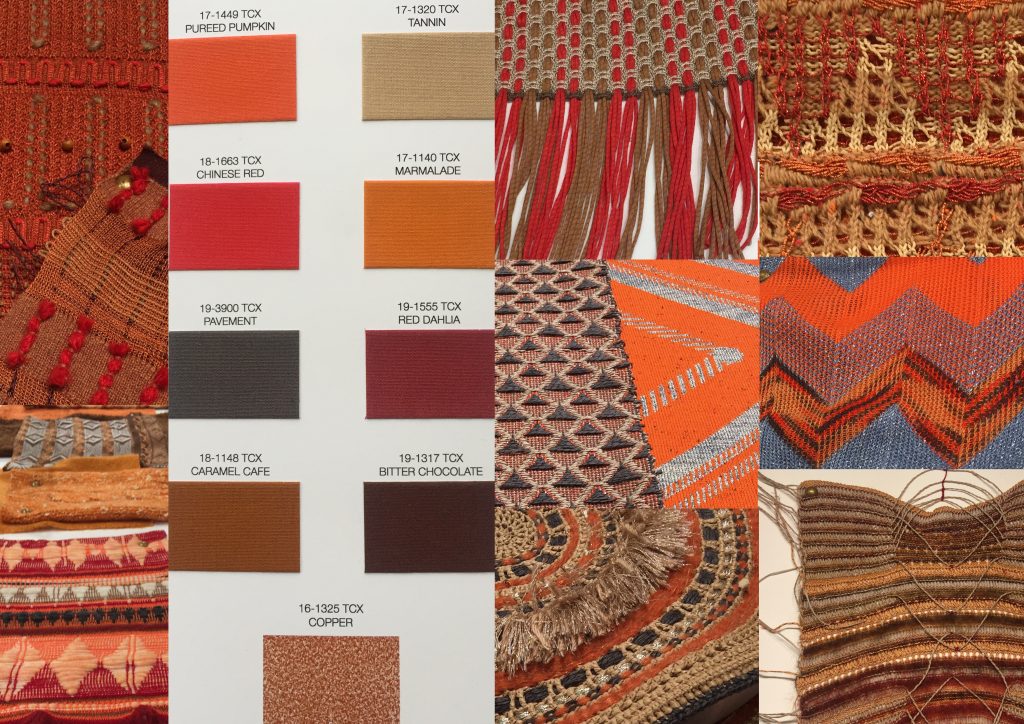
Peruvian Bohemia takes us on a journey through Peru’s rich textile landscape. A saturated and boldly painterly colour palette of emerald greens, indigo blues and purples, primary red and golden yellow is applied in a busy way. Expressive, hand-craft like knits in mid-gauges humbles the textured and geometric stripe patterns, inspired by heritage loom weaving. The Peruvian alpaca is acknowledges in both fibre and applications, with loosely single-twist and roving yarns trapped within regular knit structures. Silhouettes details are inspired by South American dress, including tie necklines, dress-cuffs and frill edges.
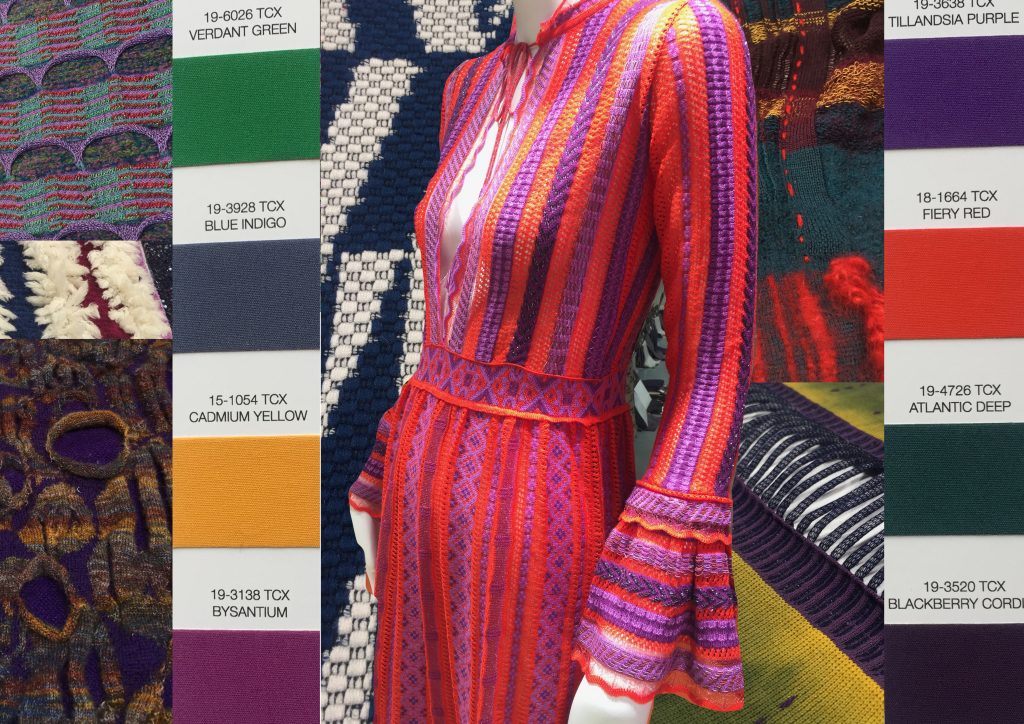
From the warm and tantalising Southern Hemisphere, we travel north to an Icelandic Fairytale. True to folk tales, the landscape we see is powerful, unnerving and breath-taking. Cold water blue and winter cloud white, are warmed by earthy red-browns, bright moss greens and yellows, and volcanic rock grey. Blue-purple tones inspired by northern-grown berries creates complexity in the palette. Irregular wavering jacquards are knitted in multi-tone textures of fine boucles, high-twist yarns and soft superfine-wools. Mossy textures in subtle multi-colour melange wools form the base knits, whilst wild fur and animal fleece like textures are knitted in frosty sea blues. Blister jacquard textures, energetic paper fibres and feather-trapped in-lays give an expressive, and playful feel to fabrics.
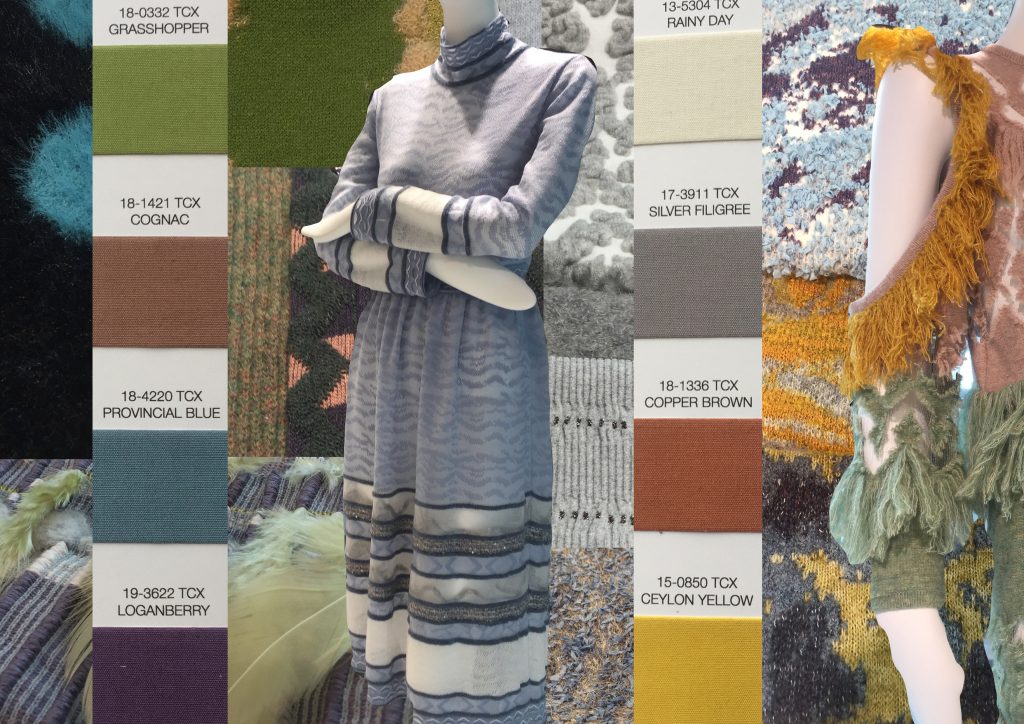
For AW19/20, innovative wool mill UPW brought some interesting new blends and textures to their collection. Their best-selling woollen-spun merino yarn ‘New England’ is now being offered in a beautiful bi-colour slub, which with their large stock-service range, the designer has the option to easily create specific colour ways to suit their collections, but most interestingly, is their offering of dye-resistant treated New England yarns, which can be used together with the standard New England quality to create some really interesting tonal effects, perhaps with dye-resistant contrast trims, or in stripes and jacquards patterns. This new development is suitable for piece-dyeing, which whilst also interesting from a creative design perspective, gives more flexibility to the customer in terms of colour-commitment later in the season. UPW’s fully-traceable cashmere has been blended with SeaCell™, a biodegradable cellulose fibre in quality ‘Nourish’ that is also machine-washable making this a practical, yet luxurious yarn option with well-being benefits.
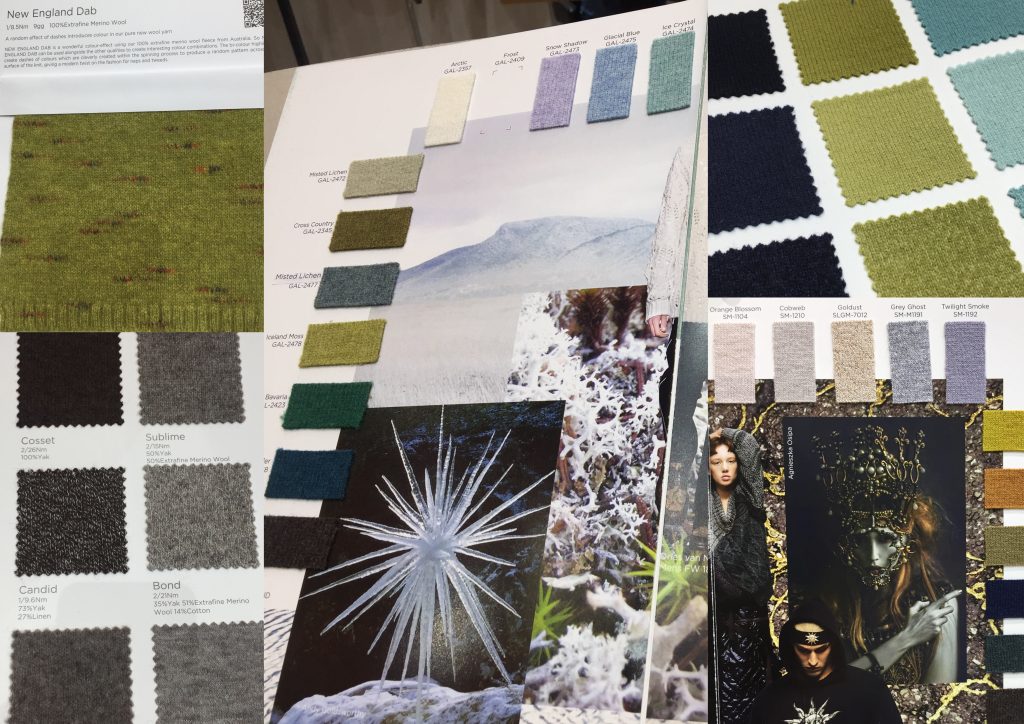
For AW19/20, UPW have collaborated with Shokay, the world’s first socially responsible premium yak down brand, to launch their luxury yak yarn range. From the 100% Yak 2/26nm quality ‘Cosset’ through to commercial merino and lighter cotton and linen blends, UPW and Shokay together have created a high-quality and versatile yak yarn range with both companies committing 1% of their revenue from the collection towards the Community Development Fund.

Merino mill Xiano move to extend their sustainable offering with new qualities ‘Hope’ (post consumer polyester and extra fine merino blend), an environmentally-friendly hydrogen peroxide super-wash treated extra fine merino ‘Eco’ and enzyme shrink-resist treated ‘Era’. All merino wool used by Xiano follows the RWS (Responsible Wool Standard) and is fully-traceable to farm.
Yarns & Colours offer exciting new quality ‘Selina’ that reacts to UV light, changing colour, whilst bringing design-led qualities ‘Focus’ (a chunky roving spun wool suitable for luxurious hand-knit) and ‘Kimi’, a space-dyed fine fleece-like yarn. Transeasonal lightness is offered in new organic linen and cashmere blend ‘Vedic’.

Innovative cashmere mill Consinee introduce two new high merino content cashmere blends that give a transeasonal edge to their collection, ‘Jupiter’ and ‘Vesta’ meanwhile Topline introduce a sensual range of cashmere and baby llama blends for this season in a variety of blend ratios and weights, ‘Kiddo’ and ‘Cirro’ and royal alpaca and merino blend ‘Assisi’.
Once again, practising knitwear and knitted textile designers Rory Longdon, Katie Hanlan, and Steven Oo interpreted and responded to the SPINEXPO trend directions, showcasing yarn innovations by mills exhibiting at the show, working with knitters such as MRC (Rory’s long-term collaborative partner factory) and Santoni (Studio Eva x Carola)
Knitted textile consultant Laura McPherson and Nottingham Trent University graduate Natasha Holdgate contributed innovative and conceptual textile responses whilst Winchester School of Art design duo M.oh.K returned responding showcasing a range of yarns in equally technical and intricate knitted fabric lengths.
The innovative circular knit studio Eva x Carola presented a combination of high surface interest fabrics and luxurious activewear-inspired pieces in response to the Tokyo Shrine trend direction in collaboration with circular knit specialist knitter, Santoni, entitled SPINACTIVE.
Founder, Karine Van Tassel strongly believes that we, as designers and buyers, need to be concerned with and embrace new technology, which is evident by the creativity achieved by her selected stylists, who work on-the-ground with those with the technological know-how of modern knitted textile machinery. In this sense, Karine does ‘not see the end of Chinese leadership in knitwear.’ As she explains, the Chinese have invested in other manufacturing markets such as Vietnam, Bangladesh and Thailand, growing their innovative technology and manufacturing to bring opportunity to broader markets and global economies. For the smaller brand or designer, the Far East supply base can still be limiting in terms of MOQs (minimum order quantities) however, these restrictions have continued to steadily drop, and thus became more flexible. It is important to remember that the domestic Chinese market has grown significantly in the last 4-5 years, therefore the domestic demand on Chinese manufacturing has pushed huge growth – China is a big country, therefore, they think BIG. That said, it is evident once again that the mills and manufacturers at SPINEXPO are passionate about working more and more flexibly and creatively with global markets, from their yarn collection offerings, creative-direction, sustainability initiatives and confidently flexible stock-supported ranges.
What SPINEXPO do so well, are to connect and promote collaboration between designer, raw material supplier, technology and manufacturer. These symbiotic relationships were once again presented in inspiring, immersive and interactive ways, congruent with the aim of the show itself. Karine Van Tassel sums this up in our conversation at July’s expo, ‘one makes the other, we grow and sophisticate…fashion is not unilateral.’

Subscribe To Our Newsletter
Join our mailing list to receive the latest news and updates from our team.


